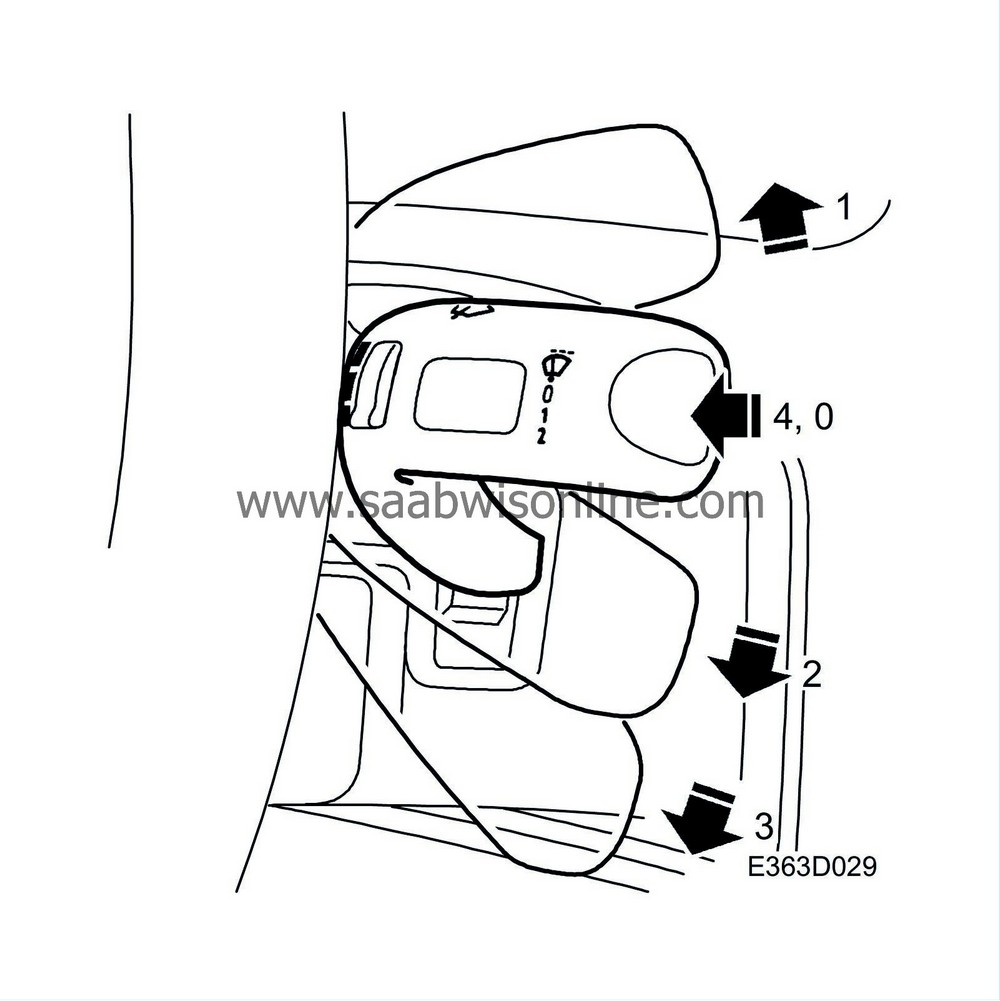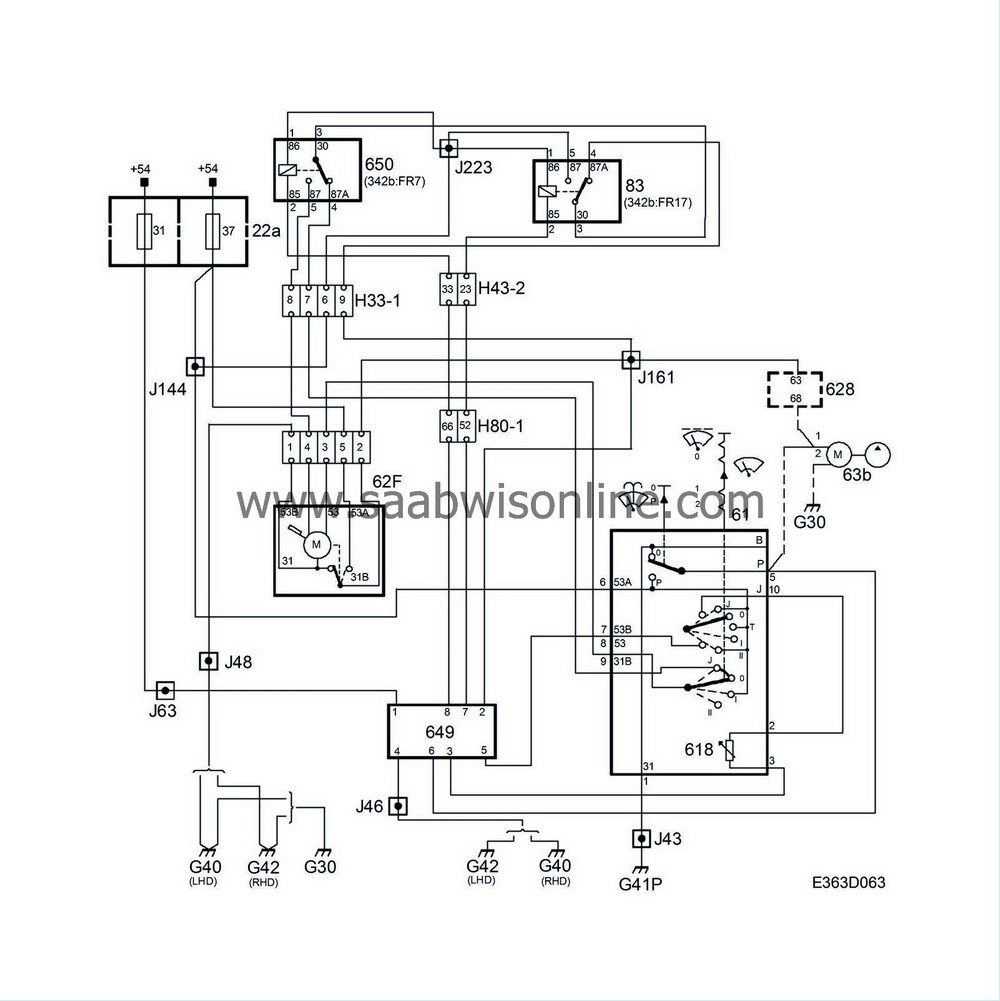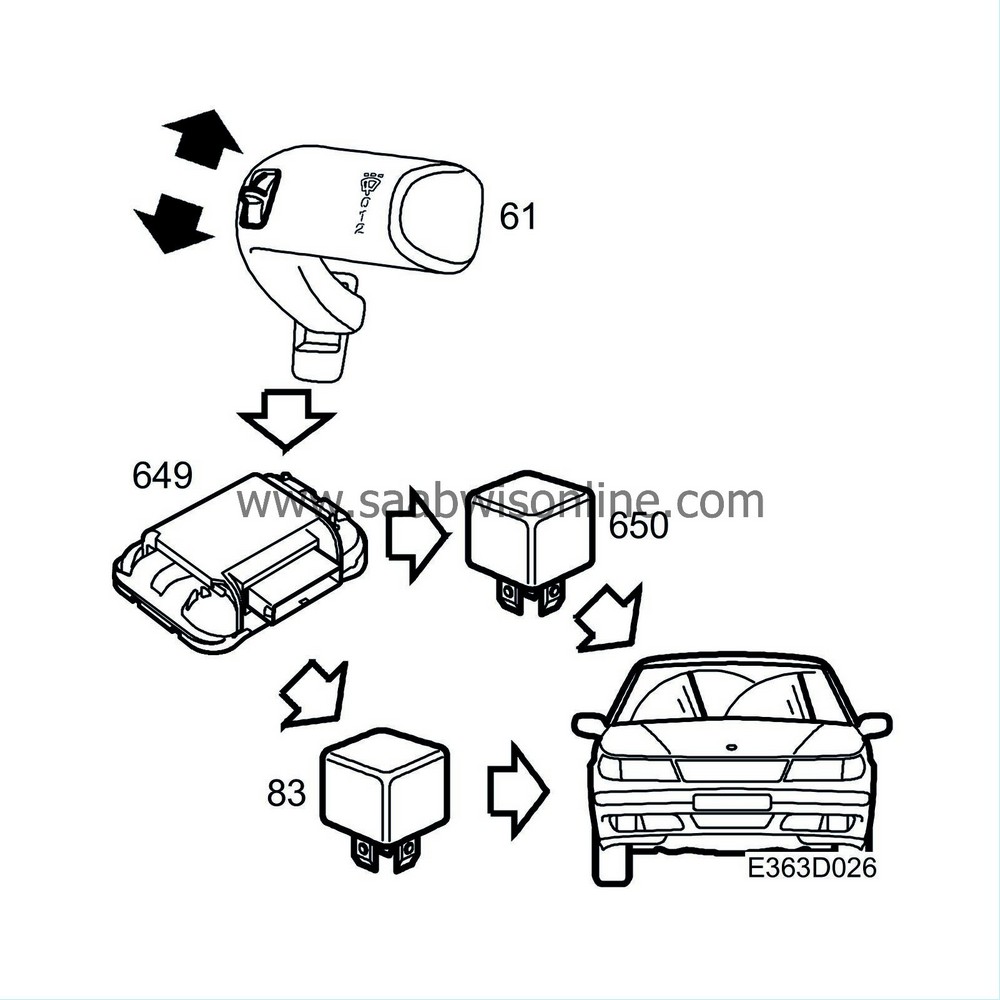PRE-RELEASE
Windscreen wipers with rain sensor
| Windscreen wipers with rain sensor |
The windscreen wipers are controlled by a changeover switch on the right-hand side of the steering column.
The assembly comprises a motor, two wiper arms and an arm linkage that converts motor rotation into wiper movement.
There is a built-in thermoswitch in the motor that trips if the control switch has been activated and the blades have jammed (frozen).
There are three modes of windscreen wiper operation:

| 1. |
Automatic
The rain sensor controls wiper motor operation from intermittent to high speed. |
|
| 2. |
Low speed
The wiper motor is activated at low speed, without the use of the rain sensor. |
|
| 3. |
High speed
The wiper motor is activated at high speed by the rain sensor |
|
| 4. |
Washing
The washer pump is activated and DICE activates the windscreen wipers. |
|
In the automatic position, a function allows the sensitivity of the rain sensor to be varied using a potentiometer. The wiper interval depends on this sensitivity. The potentiometer controls the rain sensor which activates the wiper relays.
The rain sensor is activated by moving the control lever on the right of the steering column to automatic position, which is the same as the intermittent wiper position on cars without rain sensor. The wipers will make one reference stroke after the rain sensor has been activated, partly to calibrate for a clean windscreen and partly to inform the driver that the system is active.
The rain sensor assumes control of the windscreen wipers from the DICE. The system switches between no wiping, single sweeps and continuous wiping at low or high speed, depending on the amount of water or snow on the windscreen. The sensitivity of the rain sensor increases at night-time.
Functions in various conditions
| • |
Splashes
- When a shower of water washes across the windscreen, high-speed wiping is activated until the water is removed.
|
|
| • |
Worn-out wiper blades
- When the wiper blades are worn out or dirty, a thin film of water builds up over the rain sensor, which the sensor avoids wiping unnecessarily.
|
|
| • |
Dirt
- When the rain sensor detects that the windscreen is dirty, the windscreen wipers are not activated until the windscreen is first cleaned.
|
|
| Description of operation |

Automatic position
The wiper motor has a built-in, mechanically controlled switch (31B) that is supplied with voltage irrespective of the position of the switch (61). This means that the function need only be activated by a start pulse from the rain sensor (649).When the switch (61) is set to the J position, current is supplied from pin 10 on switch (61) via the potentiometer (618) to pin 3 of the rain sensor (649).
The rain sensor grounds pin 7 or pin 7 and 8 depending on the wiper speed selected by the control module.
When the rain sensor selects to activate low-speed wiping, pin 7 is grounded by the control module which closes the relay (83). Voltage is fed to pin 9 of the switch (61) and out on pin 8. Voltage is then fed to pin 3 of the motor (62F). Voltage supplied to pin 3 of the motor (62F) is equivalent to low-speed wiping.
When the rain sensor selects to activate high-speed wiping, pins 7 and 8 are grounded by the control module which closes the relays (650) and (83). Voltage is then fed to pin 4 of the motor (62F). Voltage supplied to pin 4 of the motor (62F) is equivalent to high-speed wiping.
Switch (31B) controls the voltage so that the wiper motor always returns to the parked position after the voltage from the switch has been broken. When the wiper motor reaches to the parked position, the mechanically controlled switch breaks the voltage and the motor stops until the next start pulse is emitted by the rain sensor. Pin 2 of the rain sensor is supplied with voltage when the motor is running.
The wiper motor has a built-in mechanically controlled connector that receives power regardless of the switch's position.
The connector controls the power supply so that the wiper motor always returns to the parking position once the supply of power from the switch has been broken. When the wiper motor reaches the parking position, the mechanically controlled connector breaks the supply of power and the motor stops.
Low speed (I)
The windscreen wipers operate with approximately 48 double strokes per minute.When the switch (61) is placed in position (I), +54 voltage is supplied to the switch via fuse 37. Pin 8 in the switch supplies power to pin 3 in the motor (62F).
High speed (II)
The windscreen wipers operate with approximately 73 double strokes per minute.When the stalk switch (61) is in position II, +54 voltage is fed via fuse 37 to the switch. The voltage is fed from pin 7 of the switch to pin 5 of the rain sensor (649). The rain sensor grounds pins 7 and 8 which closes the relays (650) and (83). Voltage is then fed to pin 4 of the motor (62F). Voltage supplied to pin 4 of the motor (62F) is equivalent to high-speed wiping.



